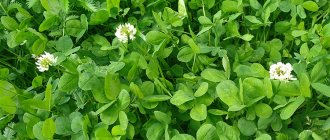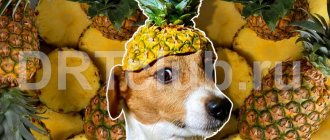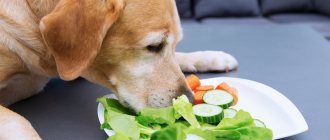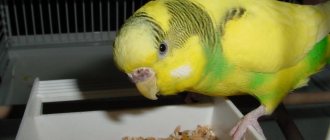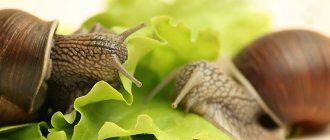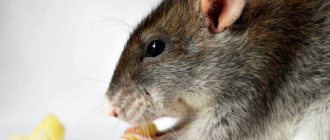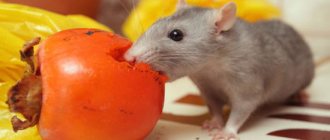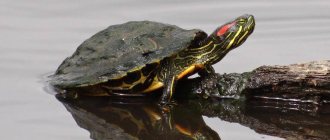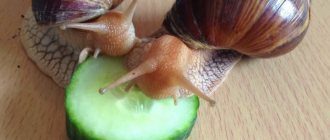These cute, cuddly, not noisy, very funny animals are becoming increasingly popular pets to have at home, including because of their food unpretentiousness. Caring for them is not particularly difficult, and communication can be a lot of fun. Have you decided to buy or have you already bought Achatina? The question immediately arose - what do snails eat, and what is strictly contraindicated for them? It is important to know this, because the health and life expectancy of a snail depend on the right food.
What do Achatina eat?
African snails feed on leaves, shoots and fruits of various plants. Many species are natural pests. They can cause significant damage to crops by eating them. However, in Europe and Russia, Achatina does not pose a threat to established ecosystems due to climate conditions.
Achatina are vegetarians by nature. Despite their homeland in Africa, they love our native fruits and vegetables, and the list of allowed foods is quite long. In a terrarium they happily eat a variety of local vegetables, fruits and herbs.
Many of them include sweet fruits in their snail food. In general, shellfish can choose one food item and eat it willingly, but they vary their food intake. Includes fiber, minerals (calcium) and protein. Greens, dandelion leaves, etc. are especially useful. Let's find out more about this.
Vegetables and fruits
Before giving fruits and vegetables to Achatina, wash them and cut them into small pieces. Grate pumpkin, zucchini and other dense vegetables using a small snail grater. All products should be at room temperature.
Achatina loves the sweet pulp of bananas, but babies should not eat it. They bite into the pulp and cannot get out of it. Snails quickly get used to bananas and do not want to eat another one. Therefore, it is better to give bananas once or twice a week.
Avocados, peaches, cucumbers and non-acidic tomatoes are delicacies for Achatina. They eat these fruits with great pleasure.
Classic vegetables (carrots, beets, cabbage of all varieties, sweet peppers) can be given daily without restrictions.
Any pumpkin can also be added to your diet. The potassium, iron, vitamins and fiber found in watermelon will provide benefits on their own.
A few words of caution. Be aware that high nitrate levels can kill the slug. Unscrupulous melon growers often use nitrates to force them to ripen faster. Choose watermelons and other squashes that are naturally ripened without the use of nitrates.
Fruits that can be eaten by slugs:
- apricots;
- avocado;
- a pineapple;
- watermelon;
- bananas;
- cherry
- pears
- melon;
- zucchini;
- carrot; carrot;
- nectarines;
- cucumbers;
- squash;
- beet;
- Bell pepper;
- plums;
- tomatoes;
- pumpkin;
- persimmon
- zucchini;
- apples.
Greens and herbs
All the succulent table greens that snails love. It can be parsley, celery, dill, dandelion, nettle, plantain.
What types of greens are good for Achatina:
- White cabbage;
- Brussels sprouts;
- Cauliflower;
- clover;
- nettle;
- plantain leaves;
- lettuce leaves
- birch leaves;
- oak leaves;
- linden leaves;
- Raspberry leaves;
- Currant leaves;
- burdock;
- alfalfa;
- bittercress;
- dandelion
- parsley;
- chamomile;
- celery;
- dill;
- spinach.
Berries
Grape
The debate about grapes has been going on for a long time. They came to the conclusion that grapes can be given, but rarely, since Achatina quickly gets used to it and refuses other food. Grape leaves can be given fresh or dried. Grapes can be frozen for the winter and fed in small portions 1-2 times a week.
Strawberries and wild strawberries
Local species of snails adore strawberries and, with a clear conscience, devour them in their beds. Achatina also attracts them. They can be frozen in summer and fed in winter. Thawed berries retain all their beneficial properties and support mussels during the long winter. They are rich in vitamins and minerals and have an antibacterial effect.
Raspberries
Fresh green raspberry leaves are no less beneficial for snails than juicy, aromatic berries. They can be dried and used as additives in winter. You can put fresh and defrosted berries in the feeder.
Berries allowed for Achatina:
- Grape;
- strawberry;
- strawberry;
- raspberries.
Dairy
Milk is a valuable product that contains protein, calcium and many useful microelements. Many snail farmers cannot come to a consensus about the benefits of milk for Achatina. Some argue that snails should not be fed dairy products as they do not consume them in their natural environment. On the other hand, domestic Achatina are already accustomed to living with people, and their diet can be very different from the diet of their wild relatives.
If you want to give milk to Achatina, give low-fat milk (up to 2.5%), or even diluted. Then watch the pets' reactions. It is under no circumstances recommended to give dairy products daily.
Dairy
- low-fat sour cream
- Skimmed milk;
- Skim cheese.
Cereals, seeds and nuts
Grains and nuts are usually served as a puree.
Cereals
- Buckwheat grain;
- corn;
- oats;
- millet;
- rice;
- rye;
- barley.
Seeds and nuts (raw)
- Nut;
- pine nuts;
- cashew nuts;
- sesame;
- almond
- flax-seed;
- sunflower seeds
- pumpkin seeds;
- hazelnut.
What else do snails eat?
Some Achatina are very fond of mushrooms. They can be eaten raw or dried. Usually these are champignons or oyster mushrooms. Often mushrooms are added to the protein mixture, and some snail breeders plant mushrooms directly into the soil where the animals live.
Many people notice that snails love to eat paper. This is natural because paper is made of cellulose, and clean, unprinted paper will not harm pet shellfish. Do not leave pieces of newspaper or printer output in the container.
Snails may also like fish food (daphnia). It compensates for the lack of protein.
Achatina eats dried fruits prepared at home (apples, pears, plums, etc.) with great pleasure.
Other
- Mushrooms (edible)
- Fish food (daphnia);
- Dried fruits
- Blank paper.
Vegetables that can be given with restrictions
I personally don’t give the vegetables that will be discussed in this section to the snail, because I don’t see any point in it. Vegetables, fruits, herbs and berries allowed without restrictions are quite enough to diversify your diet. And according to statistics, such products are not particularly welcomed by the snails themselves.
However, if you have a desire, you can also include them in the food a little:
- Green peas in pods - give a little, because legumes cause gas.
- Celery is, in principle, not prohibited, but it is very aromatic, so there are concerns about possible reactions to this vegetable (I very rarely offer it to the snail, but it eats it without much enthusiasm).
- Beets – you can give a little, preferably grated. Since raw beets have a laxative effect and are not particularly delicate in taste, I also don’t see much point in feeding snails with them.
- White, red and Chinese cabbage. It is believed that the product is allowed, but I recommend giving only young leaves. Winter dense cabbage has an islandy flavor, so it is better to replace it with iceberg lettuce, which is more delicate.
- Kohlrabi is also often “vigorous”.
- Artichoke.
- Edible mushrooms – my snail doesn’t like mushrooms. If you give it, it’s very little. Not all mushrooms are well digestible.
What not to give to snails
Snails should not eat foods containing salt, citric acid or other acids, sugar or starch.
Achatina should not be eaten
- legumes;
- fried vegetables;
- candied fruits;
- smoked meat;
- pasta;
- semolina;
- salt and everything salty;
- spices;
- dried fruits (figs, sultanas);
- raw potatoes.
Through trial and error, it was found that spicy herbs (onions, garlic, mustard, hot red pepper) and citrus fruits should not be given.
House
Aquariums made of glass or plastic with a volume of at least three liters per snail are suitable for Achatina. The terrarium must be equipped with a tight lid with holes. Like all Achatina snails, they like to burrow at the bottom during the daytime, so you need to take care of a good layer of substrate. If you decide to use peat, pay attention to how clean it is, as otherwise the soil will become acidic within a few days. It is advisable that the substrate is constantly moist, so the snail will feel more comfortable. The best option is sand, since for the African individual this is a natural habitat and, moreover, stimulates their reproduction.
Among other things, you can use nut shells. The advantage of such an organic substrate is that it does not get dirty, and the snail will not scratch the walls of the aquarium with sharp particles stuck to its body. You need to clean the terrarium every few months, replacing the substrate in it.
It is not necessary to install lighting in the terrarium; the snails do not pay attention to it. But the temperature should be from 20 to 28 degrees, but avoid direct sunlight.
To make your home more attractive to snails, you can place pieces of rotting wood or broken pieces of flower pots in the aquarium.
Mineral nutrition for Achatina
It has been proven that calcium is the most important mineral supplement for Achatina. Without this mineral, the snail will not grow, its shell will deteriorate, and eventually the snail may stop growing and become sick. This is important for both babies and adult snails, since Achatina grows throughout its life. If a snail begins to have problems with its shell (cracking, peeling, etc.), the dose of mineral supplements should be urgently increased.
It can be pure calcium chalk:
- feed chalk;
- Crushed eggshell;
- sepia;
- Shell rock, etc.
The calcium-rich mixture can be prepared and seasoned with vegetables or served on its own.
Calcium Rich Blend Recipes
Option 1:
- 50 g oatmeal;
- 50 g rice
- 5-6 eggshells;
- 20 g chalk;
- 20 g shells.
Option 2:
- 50 g buckwheat;
- 100 g chalk;
- 20 g dried mushrooms;
- 5 eggshells;
- Sepia snail (crushed cuttlefish shell) - 1 piece;
- 1 tbsp. spoon of bone meal;
- 20-30 g sesame seeds.
Mix all ingredients and grind until you get ground coffee. Store in an airtight jar in a dry, dark place. Shellfish eat this mixture with great pleasure. You can also make a pure grain mixture from a variety of grains.
Protein supplement
Every living creature needs protein, and Achatina is no exception. Plant and animal proteins are the “building blocks” for building body cells. For snails, you can prepare ground food containing vegetable protein:
- cereals;
- corn
- bran;
- Champignon mushrooms);
- nuts;
- seeds.
Animal proteins can be useful for snails in the form of powdered milk, dried daphnia, and bone meal. However, you should be careful with these types of food. Overeating protein can lead to poisoning and death. Snails can be fed protein no more than twice a week.
Features of feeding
How do snails eat?
Snails feed using the radula. The radula is a chitinous ribbon on which a huge number of teeth are located. Snails ingest microscopic fibers, crush them with their teeth and send them into the esophagus.
When and how much to feed
- Achatina snails are predominantly nocturnal. They sleep during the day, and in the evening they begin to be active. Therefore, you need to feed Achatina in the evening.
- Young snails are fed once a day, adult snails 2-4 times a day.
- Taste preferences, diet and amount of food consumed by snails depend on age. At home, snails are selective and capricious, so the owner needs to take into account food preferences and adapt.
- Food for snails is left in a bowl or on a small tray. Often large lettuce leaves are used instead of a bowl.
How to feed snails in winter
Fresh fruits and vegetables are plentiful in the summer, but what to feed them in the winter? The conditioner can be prepared in advance and stored in a jar in a dry place. In winter, you can buy pumpkin, carrots, apples, cottage cheese, cream, cabbage, etc. in any store. Vegetables (zucchini, tomatoes, etc.), herbs and fruits can be frozen.
It's a great idea to grow greens and lettuce on your windowsill. You can also germinate various seeds and even mushrooms in the terrarium substrate. Sprouted wheat or oats are excellent food for Achatina. Avoid buying out-of-season fruits and vegetables at the store. A large amount of fertilizers are used to grow them. With an overdose of nitrates, the snail can become poisoned and die.
Allowed berries
You should not heavily feed your snail with berries all summer. Berries in general are more acidic than fruits.
Most of the berries grow in the summer. Berries for the most part contain a lot of acids, but some of them can be given to your pet in limited quantities:
- watermelon;
- cherries;
- grape;
- raspberries;
- strawberry;
- blueberries, blueberries (within reason, as they contain a lot of pectin);
- strawberries
Watermelon can be given in sufficient quantities. You just need to buy it during the season and not on the roadsides.
Cherries are also not forbidden. My snail happily eats half or even a whole berry a day during the summer season.
The snail receives all the other berries listed above in limited quantities and only if they are sweet and not fermented. Strawberries are known to contain a lot of acid, but some varieties are very sweet. These end up “on the table” of Chamomile and are eaten with pleasure by her. By the way, blueberries are also my snail’s favorites.
Crusts
Snails do not eat the rinds of watermelons and melons. They eat away all the flesh and the white skin underneath the flesh, leaving the yellow crust behind.
Therefore, when feeding, you can cut it off if desired. Adults can gnaw everything out on their own, so, in principle, you don’t have to bother. The main thing is to simply remove the leftovers in a timely manner after the meal so that they do not spoil. But for young snails it is better to cut it off and give the pulp in doses.
Basic moments
An important rule when preparing your pet’s diet: plant foods (vegetables, fruits, berries, herbs) should not be sour or astringent. However, fruits should not be the basis of the menu. They are used as dessert, in small quantities.
Domestic shellfish can be fed the following fruits:
- apples (necessarily ripe and sweet);
- pears (ripe fruits, for example, Chinese);
- apricots;
- bananas;
- plum;
- peaches;
- nectarines.
All of the listed fruits must be grown in an environmentally friendly place without the use of chemical fertilizers and collected in season. Imported fruits and berries, especially exotic ones, may contain harmful substances, so it is better not to use them to feed snails. Before giving fruit to shellfish, they are thoroughly washed.
Feeding tiny snails bananas should be done with extreme caution. Children can choke on the ripe pulp of this fruit.
Fruits that contain acid are contraindicated for feeding snails. These include:
- all citrus fruits (even sweet oranges contain acids that can corrode the body of a mollusk);
- kiwi (with the exception of sweet, ripe kiwi - gold, which can be given to snails in small quantities);
- pomegranates (contain acids);
- persimmon (has astringent properties that can harm the digestive system of the mollusk).
There are snail breeders who offer their pets kiwi and persimmon in small quantities if they do not have an astringent taste. Each new product is given to snails in small quantities, after which the reaction of their body is observed.
